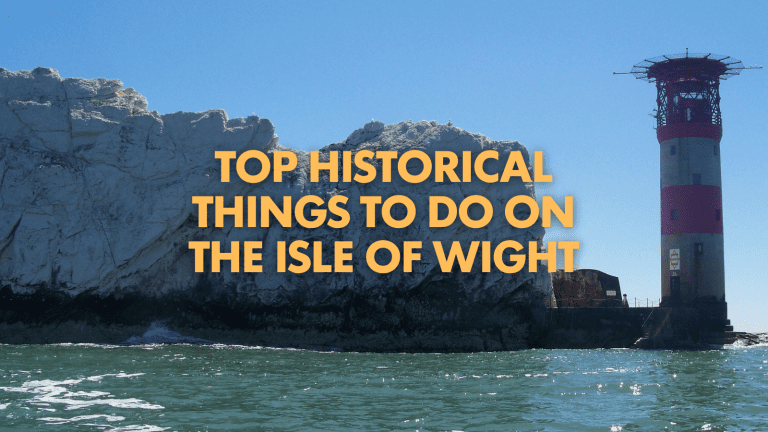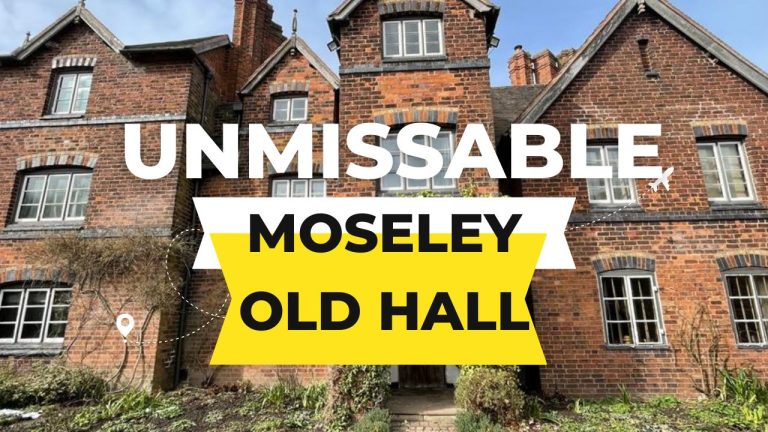Did you know this about Ripon Cathedral?
The official name for Ripon Cathedral is the Cathedral Church of St Peter and St Wilfrid, but since 1836 it is commonly referred to as Ripon Minster. This cathedral is to be found in the city of Ripon which lies in North Yorkshire. It has its beginnings in the 660s as a monastery founded by Scottish monks, refounded in 672 by St Wilfrid as a Benedictine monastery. The tenth-century saw it become collegiate taking on the role of a mother church until the end of the Middle Ages within the large Diocese of York. The church became the cathedral for the Diocese of Ripon in 1836 – the first to be established since the Reformation. The Diocese became a part of the new Diocese of Leeds in 2014. Through this incorporation, it is now one of three co-equal cathedrals of the Bishop of Leeds.
[/et_pb_text][/et_pb_column][/et_pb_row][et_pb_row _builder_version=”4.15.0″ _module_preset=”default” global_colors_info=”{}”][et_pb_column type=”4_4″ _builder_version=”4.15.0″ _module_preset=”default” global_colors_info=”{}”][et_pb_text _builder_version=”4.15.0″ _module_preset=”default” global_colors_info=”{}”]Architecture and History
[/et_pb_text][/et_pb_column][/et_pb_row][et_pb_row _builder_version=”4.15.0″ _module_preset=”default” column_structure=”1_5,3_5,1_5″][et_pb_column _builder_version=”4.15.0″ _module_preset=”default” type=”1_5″][/et_pb_column][et_pb_column _builder_version=”4.15.0″ _module_preset=”default” type=”3_5″][et_pb_image src=”http://historywithhenry.com/wp-content/uploads/2022/04/IMG_3888.jpg” _builder_version=”4.15.0″ _module_preset=”default” alt=”Ripon Cathedral” title_text=”IMG_3888″ hover_enabled=”0″ sticky_enabled=”0″ align=”center” width=”85%”][/et_pb_image][/et_pb_column][et_pb_column _builder_version=”4.15.0″ _module_preset=”default” type=”1_5″][/et_pb_column][/et_pb_row][et_pb_row _builder_version=”4.15.0″ _module_preset=”default” global_colors_info=”{}”][et_pb_column type=”4_4″ _builder_version=”4.15.0″ _module_preset=”default” global_colors_info=”{}”][et_pb_text _builder_version=”4.15.0″ _module_preset=”default” global_colors_info=”{}”]The cathedral as it is seen today was built between the 13th and 16th centuries and is the fourth to have its place on this site. Architecturally, the Geometric east window is notable and the gothic west front impresses in the Early English style that is among the best of its type. Early Christian architecture is to be seen in the seventh-century crypt of Wilfrid’s church. In 672, Saint Wilfrid had stonemasons, plasterers, and glaziers brought in from France and Italy to create his great basilica. It was built in dressed stone complete with columns, side aisles, arched vaults, a winding cloister, and a good many windows.
When Saint Wilfrid breathed his last, he found his final resting place near the high altar of his basilica. The crypt of Wilfrid’s church was all that escaped the English king Eadred’s ruination of the church in 948 which served as a warning to the Archbishop of York. The tiny 7th-century chapel is today intact beneath the later grandeur of Archbishop Roger de Pont l’Evêque’s 12th-century minster.
The minster was again reduced to ruins in 1069, thanks to William the Conqueror, but the first Norman Archbishop of York saw to it that it rose from the ashes to stand again after its third resurrection. Additions to this edition included the Early English west front in 1220 with twin towers crowned with wooden spires and lead. The reconstruction of the choir between 1286 and 1330 included a large, decorated gothic east window.
The Wars of the Roses put paid to further work on the minster, to resume only once Henry VII took the throne in 1485. An earthquake in 1450 brought down the crossing tower and the twenty-one years between 1501 and 1522 saw aisles added and the nave walls raised. Over the five years until its completion in 1494, thirty-four misericords were carved into the church by the same school of carvers responsible for the misericords at Beverley Minster and Manchester Cathedral.
1547 saw Edward VI dissolve Ripon’s college of canons and its revenue seized by the Crown which meant that the tower was never to realise the last of its perpendicular arches. The church’s stained glass and statues were later mostly smashed and destroyed during the civil war.
[/et_pb_text][/et_pb_column][/et_pb_row][et_pb_row _builder_version=”4.15.0″ _module_preset=”default” global_colors_info=”{}”][et_pb_column type=”4_4″ _builder_version=”4.15.0″ _module_preset=”default” global_colors_info=”{}”][et_pb_text _builder_version=”4.15.0″ _module_preset=”default” global_colors_info=”{}”]Alice in Wonderland
[/et_pb_text][/et_pb_column][/et_pb_row][et_pb_row _builder_version=”4.15.0″ _module_preset=”default” column_structure=”1_5,3_5,1_5″][et_pb_column _builder_version=”4.15.0″ _module_preset=”default” type=”1_5″][/et_pb_column][et_pb_column _builder_version=”4.15.0″ _module_preset=”default” type=”3_5″][et_pb_image src=”http://historywithhenry.com/wp-content/uploads/2022/04/IMG_3892.jpg” _builder_version=”4.15.0″ _module_preset=”default” alt=”Ripon Cathedral” title_text=”IMG_3892″ align=”center” width=”85%” hover_enabled=”0″ sticky_enabled=”0″][/et_pb_image][/et_pb_column][et_pb_column _builder_version=”4.15.0″ _module_preset=”default” type=”1_5″][/et_pb_column][/et_pb_row][et_pb_row _builder_version=”4.15.0″ _module_preset=”default” global_colors_info=”{}”][et_pb_column type=”4_4″ _builder_version=”4.15.0″ _module_preset=”default” global_colors_info=”{}”][et_pb_text _builder_version=”4.15.0″ _module_preset=”default” global_colors_info=”{}”]Lewis Carroll lived in Ripon and his father was interestingly the canon of Ripon Cathedral between 1852 and 1858. As such, the man who went on to write Alice in Wonderland was likely inspired to do so by his time spent in the cathedral. The misericords are carved images within the Cathedral that clearly evoke scenes of Wonderland. Among these are the carved gryphon chasing a rabbit down a hole and yet another of a small misshapen character who looks suspiciously like Alice after shrinking following the ‘drink me’ instruction. Maybe Lewis Carrol’s rabbit hole was inspired more tangibly by the crypt tunnel found within the cathedral in which he spent his years as a youngster.
[/et_pb_text][/et_pb_column][/et_pb_row][et_pb_row _builder_version=”4.15.0″ _module_preset=”default” global_colors_info=”{}”][et_pb_column type=”4_4″ _builder_version=”4.15.0″ _module_preset=”default” global_colors_info=”{}”][et_pb_text _builder_version=”4.15.0″ _module_preset=”default” global_colors_info=”{}”]Organ
[/et_pb_text][/et_pb_column][/et_pb_row][et_pb_row _builder_version=”4.15.0″ _module_preset=”default” column_structure=”1_5,3_5,1_5″][et_pb_column _builder_version=”4.15.0″ _module_preset=”default” type=”1_5″][/et_pb_column][et_pb_column _builder_version=”4.15.0″ _module_preset=”default” type=”3_5″][et_pb_image src=”http://historywithhenry.com/wp-content/uploads/2022/04/IMG_3890.jpg” _builder_version=”4.15.0″ _module_preset=”default” alt=”Ripon Cathedral” title_text=”IMG_3890″ align=”center” width=”85%” hover_enabled=”0″ sticky_enabled=”0″][/et_pb_image][/et_pb_column][et_pb_column _builder_version=”4.15.0″ _module_preset=”default” type=”1_5″][/et_pb_column][/et_pb_row][et_pb_row _builder_version=”4.15.0″ _module_preset=”default” global_colors_info=”{}”][et_pb_column type=”4_4″ _builder_version=”4.15.0″ _module_preset=”default” global_colors_info=”{}”][et_pb_text _builder_version=”4.15.0″ _module_preset=”default” global_colors_info=”{}”]The original Lewis organ dates back to 1878, rebuilt to its current fine state by Harrison and Harrison. The organ was refurbished and its pipework was thoroughly cleaned and repaired in 2013.
[/et_pb_text][/et_pb_column][/et_pb_row][et_pb_row _builder_version=”4.15.0″ _module_preset=”default” global_colors_info=”{}”][et_pb_column type=”4_4″ _builder_version=”4.15.0″ _module_preset=”default” global_colors_info=”{}”][et_pb_text _builder_version=”4.15.0″ _module_preset=”default” global_colors_info=”{}”]Bells
[/et_pb_text][/et_pb_column][/et_pb_row][et_pb_row _builder_version=”4.15.0″ _module_preset=”default” column_structure=”1_5,3_5,1_5″][et_pb_column _builder_version=”4.15.0″ _module_preset=”default” type=”1_5″][/et_pb_column][et_pb_column _builder_version=”4.15.0″ _module_preset=”default” type=”3_5″][et_pb_image src=”http://historywithhenry.com/wp-content/uploads/2022/04/IMG_3894.jpg” _builder_version=”4.15.0″ _module_preset=”default” alt=”Ripon Cathedral” title_text=”IMG_3894″ align=”center” width=”85%” hover_enabled=”0″ sticky_enabled=”0″][/et_pb_image][/et_pb_column][et_pb_column _builder_version=”4.15.0″ _module_preset=”default” type=”1_5″][/et_pb_column][/et_pb_row][et_pb_row _builder_version=”4.15.0″ _module_preset=”default” global_colors_info=”{}”][et_pb_column type=”4_4″ _builder_version=”4.15.0″ _module_preset=”default” global_colors_info=”{}”][et_pb_text _builder_version=”4.15.0″ _module_preset=”default” global_colors_info=”{}”]The cathedral makes itself heard with a ring of 12 bells and a ‘flat sixth’ bell hung in the southwest tower. A diatonic ring of ten bells was cast in 1932, with three more bells fitted in 2008. Two new trebles were put into play to give a diatonic ring of twelve, and an additional ‘flat sixth’ bell to give a light ring of eight.
[/et_pb_text][/et_pb_column][/et_pb_row][/et_pb_section]





